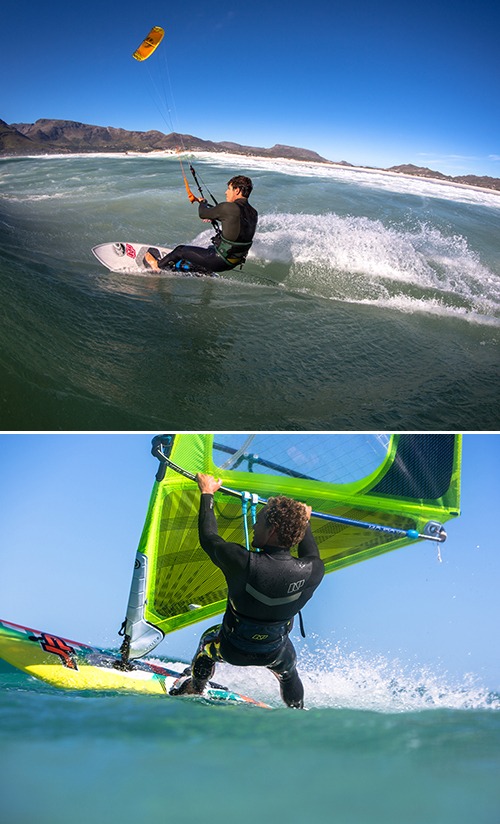Windsurfing Versus Kiteboarding: Which One Should You Learn?
Julien Blue October 25th, 2018 Posted In: Articles
What’s the Difference? Windsurfing Versus Kiteboarding
Windsurfing and kiteboarding are a great way to have fun on water, but which one should you learn? Let’s break down windsurfing versus kiteboarding to provide a clear answer for which of these to choose.
Transportation
Transporting windsurfing gear is burdensome in the case that the board bag has to be dragged around. That can become quite a hassle. Kiters, on the other hand, will have their boards under their arm and one kite over each shoulder. In this case, kiteboarding turns out to be less of a hassle overall.
Buying gear
Both costs are the same whether it is in new or used condition. Only the life of each kit determines its difference. Windsurfing kits can last five to six years before being replaced, whereas kite gear will typically be renewed every three years of heavy use. Also, buying used windsurfing kits is easier because kiteboarding gears, and notably inflatable kites, are generally more fragile.

Top: Kiteboarding and Bottom: Windsurfing
The Learning Curve
The learning curve for kiteboarding is somehow different from that of windsurfing. A couple of hours are required to learn basic kite control techniques, and this usually adds up to around 9 hours to be at a point where newbies can continue to practice with limited supervision. In the case of windsurfing, after 20 minutes on land, you will be able to hit the water, and after a few hours in flat water, students are usually at the point where they can sail back and forth.
However, kitesurfers will ride with a good technique after about 20 hours whereas a much longer learning curve is required for windsurfers to ride, jibe, and jump. Impatient windsurfers tend to turn to kiteboard because of speed in learning.
Kitesurfing is less challenging, there is no denying that. The quadriceps get a workout, but that’s about it. People who take on windsurfing will be challenged more and will see their stamina increase with each session as the body adapts to the new requirements.
Where to practice
Locations for sailing are important for windsurfing. There are two types of locations – the first is shallow water. As a windsurfer, you are in trouble if you are cruising along at speed and the fin suddenly touches the ground. It can result in a very spectacular and possibly painful catapult (and possibly some board repair). On a kiteboard, you don’t have this problem since you are only skimming the surface of the water.
If at a spot where the shoreline is lined with tall structures such as trees or lamp posts, it is somewhat tricky and hazardous to go in as a kiter since if the lines get caught in them. Kite looping along the ground and crashing into stuff thus occurs. Windsurfers have less trouble as all they have to deal with is the immediate surrounding. There may be some repairs of boards when the fin suddenly touches the ground when cruising with speed. On the other hand, kiteboard shallowness does not matter because when kiteboarding, you are only skimming the surface of the water.
Safety
When comparing windsurfing versus kiteboarding, there is a higher record of accidents in kiteboarding. Since kitesurfing is easier/faster to learn than windsurfing, a lot of people find that they are actually not physically and psychologically ready to do this sport. The thing is that as long as nothing goes wrong, it is a fun sport which gives the sensation of speed and planning. The problem arises when something out of the ordinary occurs because many kiters have started to kite at a level way beyond their experience. Therefore they don’t know how to react. The result of kite-surfer mistake also affects anyone up to 20 to 50 meters downwind of them. Meanwhile, windsurfers only have about five meters to worry about!
Kiteboarding has some advantages over windsurfing except when it comes to safety. The reason this sport is an extreme one is that the long fragile lines along with the immense power that can be generated by the surface of the kite will be a danger, regardless of technological developments. Most accidents occur due to bad decision making and careless riding.

